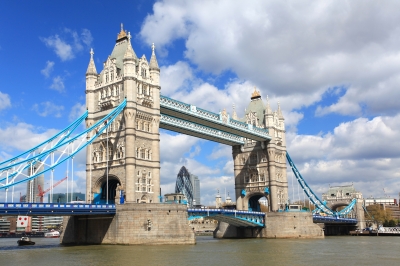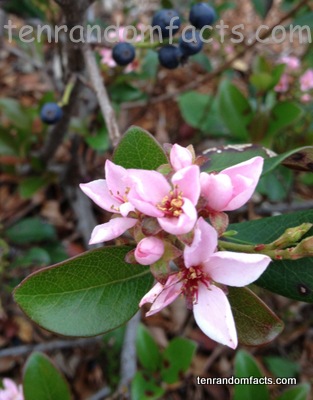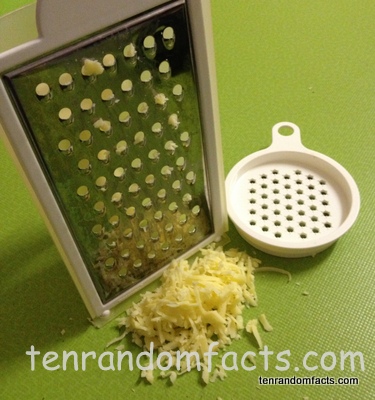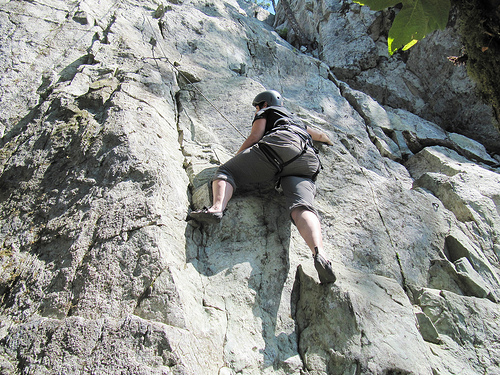
Bridge of two towers.
- The Tower Bridge is located in London, England and provides a major crossing of the River Thames.
- The Tower Bridge is a suspension and bascule (meaning see-saw and balance) drawbridge and on average, it opens 1000 times a year, with 24 hours notice being required in writing if you wish to pass under the bridge with a vessel of 9.1 m (30 ft) or greater in height.
- Originally the Tower Bridge was a greenish- blue colour, and at some stage it was painted brown, then in 1977 its new colour scheme became white, red and blue to celebrate Queen Elizebeth II’s Silver Jubilee Year.
- The Tower Bridge is 244 meters (800 feet) in length, and the two towers, which are 65 meters (213 feet) high, are connected by two horizontal pedestrian walkways which were closed from 1910-1982 due to lack of use, and now house part of an ongoing exhibition about the bridge and its history and construction.
- The motorway A100 Tower Bridge Road travels along the Tower Bridge, and on average, over 40,000 people cross the Tower Bridge daily.
Tower Bridge
Image courtesy of Vichaya Kaitying-Angsulee/ Free Digital Photos
- Construction on the Tower Bridge commenced in 1886, and continued for 8 years with 432 workers and only 10 fatalities, and was opened by the Prince and Princess of Wales on 30th June, 1894.
- Over 63,500 tonnes (70,000 tons) of concrete were used for the supports, or the piers, for the towers, and over 10,000 tonnes (11,ooo tons) of steel were used to make the steel frames of the Tower Bridge.
- At the time, the cost of the Tower Bridge construction was £1,184,000 which is now equivalent to nearly US$152 million (£100 million).
- The Tower Bridge has used an electric and oil driven hydraulic system to raise the bascules since 1976, although it originally used two steam powered engines, with an extra one added in World War II, for backup.
- A number of accidents and incidents have occurred in association with the Tower Bridge, which have included planes and road vehicles, and includes a near miss for a bus carrying 20 passengers, when the bascules were opening one evening in 1952.















